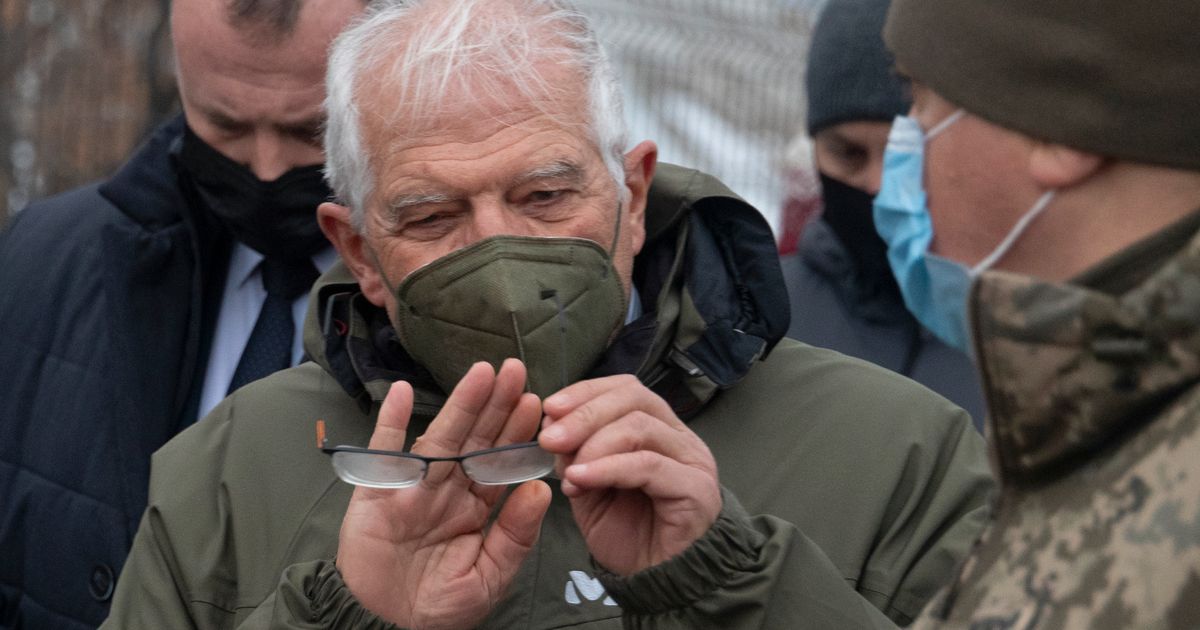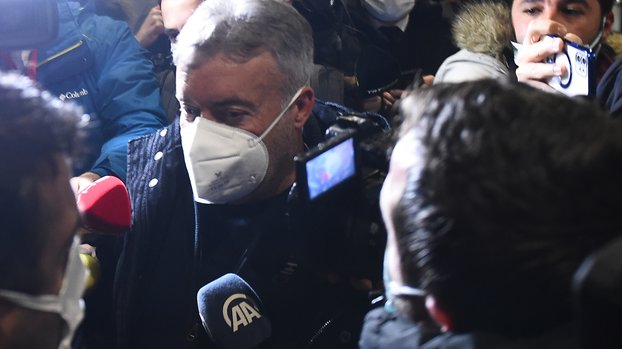Dr. José François spends a lot of time thinking about how to attract students to family medicine.
At a time when six million Canadians — one in five — don’t have access to a family doctor, and fewer Canadian-trained medical students than ever consider it their No. 1 choice in specialties, François is one of many across the country speaking out about an alarming trend.
“Over the last five years, we’ve seen a decline in the number of learners that identify family medicine as their first choice. It’s about 30 per cent right now,” said François, head of the University of Manitoba’s family medicine department.
Compare that to 2015, when 38 per cent of applicants ranked family medicine as their first choice, according to data released by CaRMS, the Canadian Resident Matching Service.
“I think the students are quite sensitive to the messages that are out there in the general public, the feeling that it isn’t as prestigious or as valued or pays as well,” François said.
“They’ve heard a lot in the last few months about the burden on family physicians administratively and how challenging the work is with a population that’s getting older and more complex, so it does scare people away.”
WATCH | Residencies for family medicine going unfilled:

Family doctor residencies going unfilled in concerning trend
Medical students need to match to a residency spot to fully qualify and get licensed as a doctor. But despite a shortage of family physicians, about 30 per cent of family residency spots went unfilled as part of a concerning decline seen over the last five years.
CaRMS is a non-profit organization that takes students’ top choices of specialties and locations and uses an algorithm to correlate them with the students who are the top choices of each residency program at the 17 medical schools across the country.
Doctors can’t become licensed or work without finishing a residency.
But this spring, after the first of two matchups, there were a surprising number of family medicine spots left open — 268, with most of them in rural areas. It’s the highest number everaccording to CaRMS. Family medicine accounted for 76 per cent of all vacant residency spots this year.
Former federal health minister Jane Philpott, who is now dean of the faculty of health sciences and director of the Queen’s University school of medicine in Kingston, Ont., tweeted her concern.
“We have a serious problem to manage together. Why are med students not choosing a career as a family doc?” she asked.
268 unfilled residency positions in family medicine in the CaRMS match yesterday. Highest number ever.
We have a serious problem to manage together. Why are med students not choosing a career as a family doc (best specialty ever😀)?
Many reasons – some of it is on us…🧵
Quebec always has a high vacancy rate after the first match, partly because physicians must be bilingual in French and English, but this year, Alberta has 42 vacancies, the highest number that were unmatched in a decade.
The Alberta Medical Association says years of underfunding and uncertainty have put a strain on primary care and have become a disincentive for physicians looking for a place to train.
“You can’t attract people here if you don’t stabilize the place and to me, that just screams we’re failing,” said Dr. fred Rinaldi, president of the Alberta Medical Association. Rinaldi spells her first name with a lowercase f.
“People aren’t interested in staying or coming to Alberta. We have a huge human resource problem. We have a physician resource problem. And this screams we’re not doing very well at being competitive with anybody else across the country.”
CaRMS CEO John Gallinger said there was an increase in family physician spots this year nationally — 1,629 compared to 1,569 last year, “so 60 more positions available and 43 more positions unfilled” after the first match, he said.
Competing across the country
But, like a dating service, Gallinger said both sides have to want each other.
“Nobody would want to see an applicant go to a program that the program has said, ‘You know, no, we don’t think that’s a good trainee.’ And certainly an applicant would not want to find themselves in a program that they didn’t want to attend,” he said.
Canadian-trained doctors (CMGs) and internationally trained graduates (IMGs) are both eligible for the first match, but most provinces separate them into different streams. Quebec is an exception.
In the second match, CMGs and IMGs compete for all unfilled spots across the country.
The problem with the second match, Rinaldi said, is that unmatched doctors may decide to apply for family medicine, even if they really don’t want to practise it. Once inside the “system,” they can take electives and make connections that will help them move into the speciality they really want to pursue.
“So it’s not like, ‘Oh, don’t worry, we’ll fill them.'” Rinaldi said. “We may fill them with 42 disinterested people who never have any intention of practising family medicine.”
Looking for a match
Every year, however, there are also doctors who go unmatched. Many are internationally trained medical graduates.
Dr. Saja Jaberi graduated from medical school in the United Arab Emirates in 2017. The next year, she moved to Toronto, did her medical equivalency exams and started applying for residency spots in 2020.
Her first choice was family medicine. She got an interview in Ontario, but didn’t match to a program.
“It was really hard and challenging because I didn’t know what I was missing. I would have liked to receive some feedback,” she said.
Determined to strengthen her application, Jaberi started working as a telemedicine physician assistant, volunteered and did observerships at different hospitals.
She is also a clinical trial co-ordinator and researcher at Toronto Western Hospital. Jaberi even learned French, hoping that would open more doors.
Despite all that, Jaberi, 29, went unmatched in 2021, 2022 and so far in 2023 — even though she had interviews in Quebec and Saskatchewan.

Jaberi has applied to all of the empty residency spots in the second match, which will be released on April 27.
“I don’t want to get my hopes up and get disappointed all over again, so hopefully someone might look at my application and find me as a suitable candidate,” she said.
“I’m running out of time. My gap of medical experience is increasing. It’s almost four years for me out of clinical practice.”
Jaberi doesn’t know what she’ll do if she doesn’t match, but she’s started the process to do her equivalency exams in the United States.
“For me, medicine is not a job. It’s a lifestyle that I chose. And I do wish to be able to practise and to do what I love most.”
‘Really powerful and beautiful’
Dr. Monty Hackett, who did his medical studies at Western University in London, Ont., matched to a family medicine program at Queen’s University this year on his first try. He was thrilled.
“You get to see people straight from birth all the way to end of life, which I think is really powerful and beautiful,” said Hackett, who is also president of the Canadian Federation of Medical Students.
Hackett, 26, knows most young doctors aren’t as interested in family medicine as other specialities.
“We need to make family practice more attractive as an option for medical students, you know, attract more folks to med school who actually want to do family medicine and then make the road to family medicine more accessible,” he said.
“Governments certainly can provide further subsidization to support family physicians and make the profession more attractive.”
For example, Hackett said family physicians do eight to 10 hours a week of paperwork. At an average of 15 minutes per patient visit, “you’re quickly seeing hundreds of visits that are being designated as paperwork time rather than health care.”

In Manitoba this year, 13 of the 62 family medicine spots were unfilled after the first match, most of them in rural areas.
François is confident all of them will be filled, but he worries about how to make family medicine more attractive for new doctors.
“Part of our work really involves connecting back with those students early on in their training, making sure that they see positive sort of models within their training program, but it also means making sure that we’re creating jobs that learners want,” he said, adding that is something governments have to do, by changing funding models, creating more interdisciplinary teams and adding more administrative support in family clinics.
At the front end, though, François wants to see more medical school training taking place in community settings so students can see the value and fulfilment in following patients throughout their lives and helping them with health issues as they arise.
Medical students “want to be doing it all and something happens in the course of the training where they suddenly want to do things in a … more narrow focus,” he said.
“So we need to change their curriculum to make them comfortable with the broad range of things that we see in primary care,” François said, adding that means exposure early — in their first year — and often — every week, if possible.
WATCH | Why aren’t more doctors going into family medicine?
.jpg?crop=1.777xh:h;*,*&downsize=510px:*510w)
Why aren’t more doctors going into family medicine?
Dr. Alykhan Abdulla has been a doctor in Ottawa for three decades. He invites CBC Ottawa’s Omar Dabaghi-Pacheco into his practice for a day to observe how he manages the workload and burnout that comes with being a family doctor in 2023.
Note: This article have been indexed to our site. We do not claim legitimacy, ownership or copyright of any of the content above. To see the article at original source Click Here












